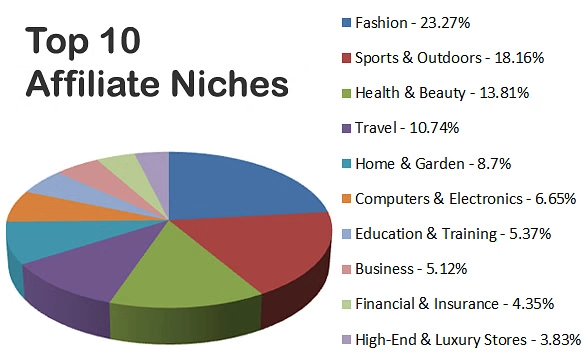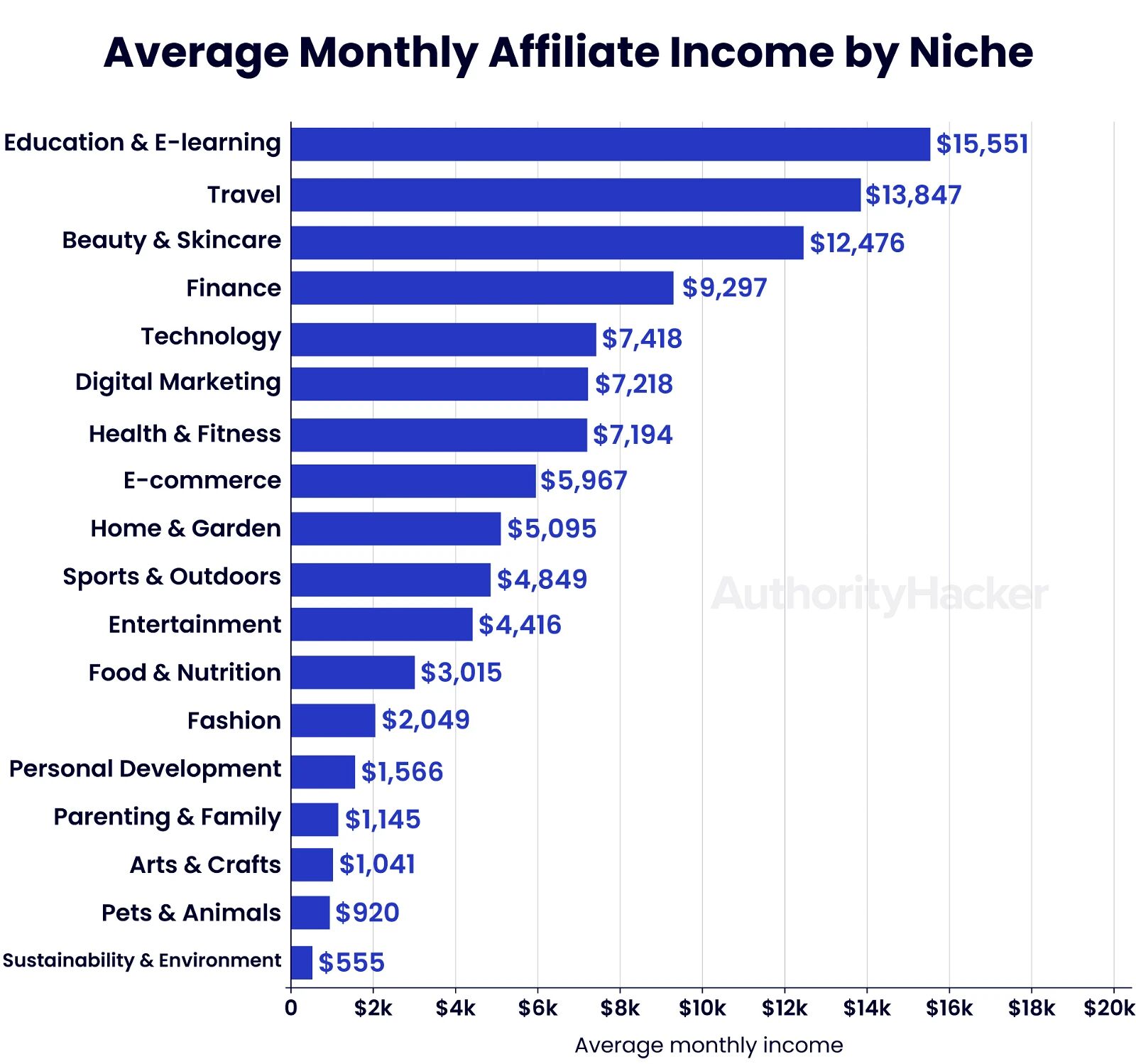
Here is my little story. When I first started affiliate marketing, I had no idea how powerful it could be. I remember spending my first $40 on an ad campaign and thinking, “Well, let’s hope this works.” To my surprise, I earned back $113 in commissions. I was hooked. That’s when I realized affiliate marketing isn’t just about spending money but also making every dollar you invest work smarter, not harder.
Affiliate marketing ROI (Return on Investment) is where the miracle happens. It’s the key to figuring out how much you’re earning for every penny you put in. Trust me, once you understand it, it’s like having a superpower in the marketing world.
Whether you’re running paid ads, creating content, or leveraging email campaigns, knowing how to measure your ROI helps you optimize and scale your efforts like a pro.
So, how do you make sure your dollars multiply rather than just disappear into the void of marketing expenses? Let’s dive in
I highly recommend “Affiliate Marketing For Dummies“, it’s a must-read for anyone starting their affiliate marketing journey!
Key Takeaways
- Understanding affiliate marketing ROI is crucial for informed decision-making.
- Effective tracking can enhance your profitability analysis.
- Recent trends show significant growth in the affiliate marketing industry.
- Strategies for optimizing ROI can substantially improve performance.
- Monitoring tools are essential for accurately assessing marketing campaigns.
- Addressing common pitfalls ensures sustainable growth in affiliate marketing.
Understanding the Basics of Affiliate Marketing
Affiliate marketing is a partnership where businesses pay affiliates for bringing in traffic or sales. It’s a key part of performance marketing, making sure affiliates get paid for their work.
In 2023, the U.S. spent $9.56 billion on affiliate marketing, showing its big role in digital sales2. The main players are the seller, the affiliate, and the consumer.
Affiliate marketing is great because it can make money while you sleep (of course if you put more effort at the beginning). How much you earn depends on the deal, like a percentage of sales or for each lead.
But there’s one thing you need to remember: being upfront about your affiliate relationships. The FTC (Federal Trade Commission) has rules in place to make sure everything stays transparent, so when you promote a product, you have to let people know you might get a commission.
Brands looking to get into affiliate marketing need to know the different types. These include unattached, related, and involved models. Knowing these can help affiliates market products better. With the right strategy, even a few sales a month can lead to big earnings.
What is Affiliate Marketing ROI?
Affiliate marketing ROI (Return on Investment) is basically the scorecard for your affiliate program. It tells you whether all the time, effort, and money you’re pouring into your affiliate marketing strategy is worth it. Simply put, it’s how much money you’re making compared to what you’re spending. If the numbers are in the green, congrats! you’re doing something right!
The Importance of ROI
ROI isn’t just some fancy marketing term. It’s how you know if your strategy is working. Take this: some top-notch affiliate programs can have an ROI of up to 1,400%. Crazy, right? It’s proof that when done right, affiliate marketing can bring in serious cash.
Plus, tracking your ROI helps you spot opportunities, fix what’s not working, and focus on strategies that bring the most bang for your buck.
How to Calculate Affiliate Marketing ROI
Okay, math time: but don’t worry, it’s simple. The basic formula is:
ROI = (Net Profit / Costs) x 100
Where:
Net Profit = Total Revenue – Total Costs
Investment Cost = The total amount invested
Example:
Daniel’s Story: Turning $1 into $6.14 with Affiliate Marketing
Meet Daniel, a regular guy with a knack for tech gadgets and a dream of earning some extra cash online. He wasn’t some marketing wizard or tech genius, just someone curious about affiliate marketing and willing to give it a shot.
Daniel signed up for an affiliate program with a popular electronics brand because, well, he loved their stuff. Noise-canceling headphones, smart home devices – you name it. He spent $500 upfront building a basic website and running ads to get people interested.
The first month wasn’t exactly fireworks. He made $200 in commissions. A little disappointing, right? But Daniel wasn’t ready to quit.
Instead, he got smarter. He started writing honest reviews, sharing personal experiences, and even creating simple comparison charts for the products he promoted. The kind of stuff that made people think, “This guy really knows his stuff!”
Fast forward to month three. Daniel had refined his strategy, and things started clicking. That month, he spent $700 on ads, hosting, and other marketing tools. And guess what? He earned $5,000 in affiliate commissions.
Here’s how it broke down:
- Net Profit: $5,000 – $700 = $4,300
- ROI: For every $1 he spent, Michael earned $6.14 back.
Not bad for a guy who just a few months earlier was Googling “How does affiliate marketing work?”
Daniel didn’t just stop there. He reinvested some of his earnings, partnered with more brands, and eventually grew his little side hustle into a full-time gig.
What’s the takeaway? Affiliate marketing ROI isn’t just a boring calculation formula that helped Daniel figure out what worked and what didn’t. And the best part is if Daniel can turn his love for tech into a money-making machine, there’s no reason you can’t do the same with something you’re passionate about.
The Significance of Affiliate Marketing ROI
Let’s talk about why ROI matters in affiliate marketing. It’s more than just crunching numbers. ROI is your compass, your guide to knowing what’s working and what needs tweaking.
If you’re an affiliate marketer, tracking ROI isn’t optional. It’s your way of understanding whether all that time and effort (and yes, money) you’re putting into campaigns is paying off.
Why Affiliates Need to Measure ROI
ROI is like your campaign’s report card. Without it, you’re essentially flying blind. Measuring ROI shows how well your marketing strategies are performing and whether your partnerships are as profitable as they should be. The numbers don’t lie.
For instance, research reveals that 81% of brands rely on affiliate marketing to drive sales. Why? Because the returns are incredible. On average, businesses can make $6.50 for every dollar spent on affiliate marketing. Some top-performing affiliates even help brands boost sales by up to 50%.
When you know your ROI, you can make smart choices, like choosing the right niche, investing in high-performing partnerships, or testing new strategies that could greatly boost your earnings. It’s like having a cheat sheet for success.
Impact of ROI on Campaign Decisions
Interestingly, ROI doesn’t just show how well you’re doing; it actively shapes your future moves. It’s the foundation for making strategic decisions, from refining campaigns to building stronger affiliate partnerships.
Take this stat: According to the Awin Report, 63% of businesses plan to improve their affiliate relationships in the next year. Why? Because they’ve seen how partnerships with the right affiliates can make a massive difference in their returns.
Affiliates who dig into ROI and analyze it closely tend to outperform their peers. They experience higher conversion rates and better overall performance. A big part of this comes down to techniques like A/B testing, which allows affiliates to experiment with different strategies and figure out what resonates most with their audience.
Understanding affiliate marketing ROI isn’t just about dollars and percentages. It’s about knowing what works, doubling down on it, and cutting out the noise. Whether you’re a beginner affiliate or a seasoned pro, measuring ROI is your best bet for making your efforts count.
Key Factors Influencing Affiliate Marketing ROI
Getting a solid return on your affiliate marketing efforts isn’t just about luck but also understanding the gears that keep the machine running. Every element, from traffic to commissions, directly impacts how much you can earn. Let’s break it down.
1. Traffic Acquisition Costs
Traffic is the lifeblood of affiliate marketing, but in reality, it’s not free. Whether you’re using paid ads or organic methods, there’s a price tag attached. Paid ads can deliver faster results, but they’ll eat into your budget. On the other hand, organic traffic, like SEO or content marketing, takes time but is often more sustainable in the long run.
Finding the right balance here is critical. It’s like choosing between instant noodles and a home-cooked meal. Both satisfy hunger, but one is quick and costly while the other takes effort and offers lasting benefits. Smart spending on traffic ensures you’re not just breaking even but also making a profit.
2. Commission Structures
Commission rate is like the bait to attract the best affiliates. The higher the commission, the more interest you’ll generate. But there’s a catch: if you set your rates too high, you risk cutting into your profits.
It’s a delicate balance. You need to offer something appealing while ensuring it aligns with your margins. The best part is when your affiliates feel motivated, and you still walk away with a win.
3. Conversion Rates: The Game-Changer
Traffic without conversions is like filling a bucket with holes. Your conversion rate is very important. The better your landing pages and user experience, the more you’ll convert visitors into buyers.
You don’t need a massive overhaul to see improvements. Small adjustments, like using personalized content or adding engaging videos, can lead to big wins. It’s like seasoning your dish, just the right pinch of salt can transform the flavor entirely. And with a strong focus on conversions, your ROI will thank you.
4. Regular Check-Ins: Fine-Tuning for Success
Now, here’s the thing. Affiliate marketing isn’t “set it and forget it.” Regularly evaluating these factors: traffic costs, commissions, and conversions. All these will keep you ahead of the game. It’s like tuning a guitar: even the best instruments need adjustments to stay in harmony.
By staying on top of these key elements, you’ll not only improve your strategies but also carve out a stronger position in the competitive world of affiliate marketing. And that’s how you make ROI work for you.
High-Performing Affiliate Niches
Picking the right niche can feel like choosing the perfect restaurant for dinner, it makes all the difference. In affiliate marketing, your niche isn’t just about what you like; it’s about finding where the money flows. Let’s explore some of the heavy hitters.
Most Profitable Niches to Target
When it comes to profitability, some niches are absolute goldmines. Sectors like technology, finance, and healthcare have consistently delivered high returns for affiliates. Why? Because these industries solve real problems and have high consumer demand.

Take finance, for example. It’s a beast of a market, with affiliates earning anywhere from $7,000 to $9,000 monthly in certain programs. Think credit cards, personal loans, or investing tools. People are always looking for financial guidance.
Then there’s tech. My personal favorite. From gadgets to SaaS (Software as a Service) tools, the opportunities here are endless. On average, affiliates in tech rake in over $2,000 a month. That’s not bad for talking about things you probably already love, like that new AI tool or the latest gadget.
And don’t sleep on health and fitness. Whether it’s skincare routines or keto meal plans, people spend a lot to look and feel good. With the cosmetics market heading towards $750 billion by 2025, this niche is an evergreen money-maker.
Must Read: 10 Best Niches for Affiliate Marketing in 2025
Income Potential by Niche
Top niches bring top dollar. For instance, SaaS affiliate programs can pay up to $500 per sale. That’s huge, especially if you’re good at pitching high-ticket products.

And let’s talk about some emerging niches like sustainable living or crypto. The “green” movement isn’t just a trend; it’s a lifestyle shift. Products tied to eco-consciousness are attracting consumers who stay loyal. Similarly, crypto affiliates are riding waves of loyalty from a community that thrives on niche expertise.
If you’re just starting, low-competition markets can be a safe playground. You won’t be competing with seasoned affiliates, and you’ll still have the chance to carve out a solid earning potential.
The key to choosing the right affiliate niche is finding the sweet spot between passion and profit. If you’re into gadgets, explore tech. If fitness is your thing, lean into health. Whatever you pick, make sure it’s something you can stick with because consistency is what turns a good niche into a great income stream.
| Niche | Average Monthly Revenue | Projected Market Value |
|---|---|---|
| Technology | $6,000 – $8,500 | $17 billion (current) |
| Finance | $7,610 – $9,296 | $33,539.52 billion (2024) |
| Health & Fitness | $5,000 – $7,000 | $665.37 billion (by 2028) |
| Skincare | $3,000 – $5,000 | $190 billion (by 2025) |
| Cosmetics | $3,500 – $6,000 | $750 billion (by 2025) |
The demand, growth, and niche choices like sustainable living greatly impact affiliate marketer earnings.
Strategies for Optimizing Affiliate Marketing ROI
If you want solid results, you’ve got to put in some strategic effort. It’s not rocket science, but it does take a mix of refining your approach and making smart decisions. Let’s discuss how you can get the most bang for your buck.
1. Ad Spend Refinement Techniques
Picture this: you’ve launched a shiny new ad campaign, but instead of raking in conversions, you’re just watching your budget disappear. Ouch, right? That’s where refining your ad spend comes in.
First off, as I said before, don’t ever be afraid to experiment. Test out different versions of your ads, swap out the headline, try a new image, or change up the tone. It’s like throwing spaghetti at the wall to see what sticks, except with data to back it up.
And here’s a trick that works wonders: segmentation. Instead of running the same generic ad for everyone, break your audience into smaller groups. For instance, if you’re promoting a fitness product, tailor one ad for beginners and another for hardcore gym enthusiasts. It’s like speaking directly to each person’s needs because, well, you are.
Lastly, always keep an eye on your ad performance. Don’t let an underperforming ad eat up your budget. Shift that cash to what’s working and watch your ROI climb. Some campaigns have made $16 for every $1 spent which is clear proof that smart ad management pays off.
2. Leaning Into Automation
Automation is like having a digital sidekick that never takes a break. Seriously, if you’re not using automation tools, you’re leaving money on the table.
Imagine this: instead of manually tracking all your campaigns, automation pulls all the data into one neat dashboard. You can spot what’s working, what’s flopping, and what needs a little TLC, all at a glance.
It’s also great for scaling up. For example, using a marketing automation tool like Hubspot lets you handle multiple campaigns without the stress of micromanaging every little detail. Plus, it flags problem areas early, so you can fix them before they drain your budget.
Oh, and don’t forget your website. A smooth, user-friendly landing page can make or break your efforts. No one’s sticking around on a site that’s slow or confusing. Keep it clean, fast, and easy to navigate.
Use reliable web hosting services and fast-loading user-friendly themes for your website. Remember, 94% of people won’t trust a poorly designed site.
Optimizing your ROI doesn’t mean working harder, it means working smarter. Spend wisely, use tools that give you better insights, and always test your strategies. Think of affiliate marketing as running a little experiment. You refine, you test, and eventually, you nail the formula.
Affiliate Revenue Tracking Tools: Making Every Effort Count
Keeping tabs on your affiliate revenue is very essential if you’re serious about making it in this space. If you don’t know what’s working, how can you possibly double down on it? That’s where affiliate revenue tracking tools step in, acting as your behind-the-scenes MVPs.
These tools are designed to do the heavy lifting. They give you a clear picture of your campaign’s performance: where your traffic is coming from, how well those clicks are converting, and which strategies are giving you the biggest bang for your buck. It’s like having a map that shows you the shortcuts to success instead of stumbling around in the dark.
Why Analytics Tools Are a Must-Have
Analytics tools aren’t just for data geeks. They’re for anyone who wants to work smarter. They simplify everything, from tracking clicks and conversions to helping you spot opportunities to fine-tune your campaigns.
For example, businesses love these tools because they allow them to see how much they’re spending to get each customer. That insight is gold because it means you can make adjustments on the fly to spend less and earn more. And affiliates? Well, they get to focus on creating killer campaigns without worrying about crunching numbers. It’s a win-win.
Oh, and let’s talk automation for a second. These tools can handle repetitive tasks like tracking clicks or identifying top-performing ads, so you don’t have to. That’s time saved, mistakes avoided, and energy spent where it matters most: growing your revenue.
Tools You Need to Know About
Here are some solid tools you can start using right away:
- Volume: Perfect for advanced tracking and optimizing campaigns. It’s like having a marketing coach in your back pocket.
- ClickMagick: Great for smaller teams or solo affiliates. It’s simple, straightforward, and gets the job done.
- Affise: If you’re running a bigger operation, this one’s for you. It’s built for scalability and makes managing multiple campaigns a breeze.
- Tapfiliate: Super user-friendly and ideal for influencers or creators diving into affiliate marketing.
- Trackdesk: The new kid on the block, but don’t let that fool you. It’s a powerhouse for tracking and managing affiliate programs.
I came to learn that when you use the right tools, you take the guesswork out of the game. And when that happens, you can focus on what matters like building better campaigns, growing your audience, and scaling your income. So, if you haven’t already, give these tools a shot. They might just be the game-changer you didn’t know you needed.
Challenges in Measuring Affiliate Marketing ROI: Navigating the Maze
Figuring out ROI in affiliate marketing isn’t exactly a walk in the park. It’s tricky, messy, and sometimes feels like you’re trying to solve a puzzle with missing pieces. But here’s the thing, those missing pieces? They’re often just challenges we haven’t addressed yet. So, look into what’s making it tough and how to tackle it head-on.
The Common Pitfalls (and How to Dodge Them)
One of the biggest headaches affiliates face is tracking data. And when you’re dealing with numbers from multiple platforms, it’s easy to get things tangled up. Imagine trying to measure performance when every tool you’re using seems to be speaking a different language, it’s chaos, right?
Here are a few common traps that trip people up:
- Inconsistent tracking across platforms: It’s like comparing apples to oranges. One platform might say you had 500 clicks, and another says 300. Who’s right? Without alignment, your performance data ends up all over the place.
- Forgetting key metrics: Customer lifetime value (CLV) and conversion rates aren’t just fancy terms, they’re gold mines of insight. Ignoring them is like trying to win a race without knowing where the finish line is.
- Overlooking external factors: Sales can dip or spike for all kinds of reasons: seasonality, trends, or even world events. If you’re not factoring those in, your analysis won’t tell the full story.
- The dreaded “banner blindness”: Believe it or not, 86% of people just glaze over banners like they’re invisible. If you’re relying on them too much, it’s no wonder your campaigns aren’t hitting the mark.
Fixing Data Tracking Woes
Okay, so we know what the problems are. Now, how do we fix them? First, let’s talk about tools. Using solid analytics tools is a must. They give you a bird’s-eye view of all your campaigns in one place.
But it’s not just about the tools. It’s about how you use them:
- Be consistent: Make sure you’re tracking data the same way across all platforms. That means aligning your metrics, so you’re comparing apples to apples (finally!).
- Keep an eye on commissions: Changing commission structures can throw a wrench in your calculations. Stay on top of it to make sure you’re not losing out.
- Look at the big picture: Use methods like Media Mix Modeling (MMM) to study past performance. It helps you figure out what’s working and where to focus your budget.
Measuring ROI might never be perfect, but it can absolutely get better. The more you tackle these challenges head-on, the clearer your path to success becomes. And trust me, once you’ve got a handle on it, making those smart, informed decisions feels so good. It’s like finally solving that puzzle, you’ve got all the pieces, and it just clicks.
Conclusion
So, affiliate marketing ROI is not just about numbers on a spreadsheet. It’s about understanding the value of every dollar you spend and how it comes back to you multiplied. It’s like planting seeds. With the right care, strategy, and maybe a bit of trial and error, those seeds grow into something much bigger.
The beauty of affiliate marketing ROI is that it gives you clarity. It shows you what’s working, what’s not, and where to focus your energy. Whether you’re a brand trying to grow your audience or an affiliate looking to boost your earnings, ROI is your compass.
Sure, it takes effort. You’ll need to adjust strategies, experiment with commissions, and keep an eye on conversion rates. But when you see the results? That moment when you realize you’re earning $6, $10, or even $16 for every dollar spent? It’s worth every ounce of energy you’ve put in.
Affiliate marketing is constantly evolving, but one thing remains the same: ROI is your guiding star. So, take the time to understand it, embrace the process, and watch how every dollar spent starts earning you more. You’ve got this.
Frequently Asked Question
What exactly is affiliate marketing ROI?
Affiliate marketing ROI (Return on Investment) measures the profitability of your affiliate marketing efforts. It’s calculated by comparing the revenue generated through affiliate campaigns to the costs involved in running them. A positive ROI means your campaigns are working and delivering value.
How do I calculate ROI in affiliate marketing?
To calculate ROI, use this formula:
ROI = (Revenue – Costs) ÷ Costs x 100
For example, if you earned $10,000 in affiliate revenue and spent $2,000 on ads and commissions, your ROI would be 400%, showing you’re getting $4 back for every $1 spent.
What factors affect my affiliate marketing ROI?
Key factors include:
Traffic acquisition costs: How much you spend on ads or organic traffic strategies.
Commission structures: Offering fair and competitive rates to attract affiliates.
Conversion rates: Optimizing landing pages and user experiences to improve sales.
How can I improve my affiliate marketing ROI?
You can boost ROI by:
Refining your ad spend to target the right audience.
Leveraging marketing automation tools for better campaign insights.
Collaborating with top-performing affiliates and offering them tailored incentives.
Testing and improving your conversion strategies, like creating targeted landing pages.
Is affiliate marketing ROI consistent across all niches?
No, ROI varies by niche. For instance, finance and technology niches typically have higher earning potential due to their larger audiences and higher-value transactions. However, niches like health and fitness or sustainable living can also deliver great ROI with the right strategy.
How often should I evaluate my affiliate marketing ROI?
Regular evaluation is key. Most experts recommend reviewing your ROI every 3–6 months. This allows you to make timely adjustments, test new strategies, and ensure your campaigns remain profitable as market trends change.






